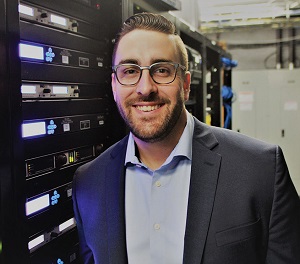
What should buyers of radio broadcast consoles know about important trends?
Jason Ornellas, CBRE, is director of engineering for Bonneville International Corp. in Sacramento, and a member of the NAB Radio Tech Committee and SBE national board of directors. This is one in a series of interviews with industry console experts. An earlier version of this article appeared in the RW ebook “Trends in Consoles.”
Radio World: The topic at hand is consoles. What’s the most important design trend, in your view?
Jason Ornellas: I see consoles becoming more of a touchscreen with virtual layers and a smaller physical footprint. Thinking of the younger folks in the industry, and today’s kids only know touchscreens, so it would make sense if we saw studios have touchscreens only. As much of a pain it would be to support a fully touchscreen type studio, I’m sure they will be common within 10 years or less. Also, with software being the backbone of these consoles nowadays, I can see consoles becoming very small, the size of a laptop, think RODECaster Pro.
RW: How could equipment manufacturers make your life as a user and buyer of consoles easier?
Ornellas: I think the console manufactures do a great job with the layout, hardware selection and color selections of consoles already. They constantly make different flavors of the console with various size and price, so they unanimously know their audience and buyers.
{Read: “How to Choose Your Next Radio Console”]
I think, as an industry, it is configuring the equipment or console that gives us the biggest headache or is the most time-consuming. I would like to see more coders and programmers to work with the vendors to make the user interface as seamless as possible while navigating it and configuring your AoIP system.
RW: What role does the console play today when planning a radio studio?
Ornellas: The console is still the heartbeat of the studio, but so many other factors play bigger roles within the design and planning of a new broadcast studio. I believe they will become more automated and smaller in size as things move virtually within the studio. The days of having big consoles, fully loaded with faders are not the future of studio design, especially for music format stations. I can see how a news talk format may still want a more traditional style console, but with AoIP making switching sources I believe time will change that mindset as well as part of the design.
RW: What will the next generation of user interface look like?
Ornellas: I think the next generation of a user interface will be very animated and powerful. I think we have already embraced in some instances that we will not be using a physical console for some studios and take everything virtual. Think out of the box. And could facial recognition be a way for a user interface to log in and interact or control the layout of the GUI? All of this is a true possibility with enhancement of technology and where we are going as humans, with everything being virtual and dependent on AI.
[Related: Watch our interview with Jason Ornellas as part of the Radio World webcast series “Broadcasting From Home.”]












